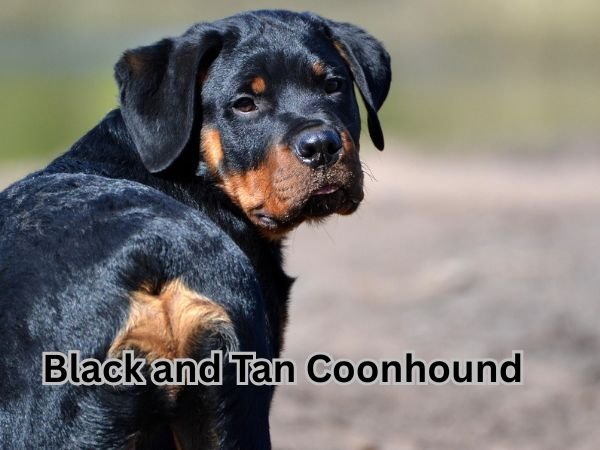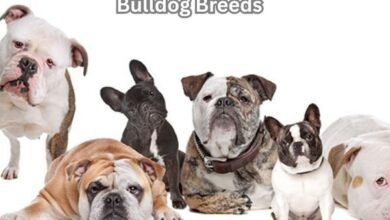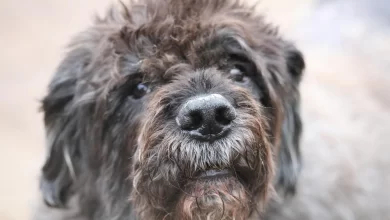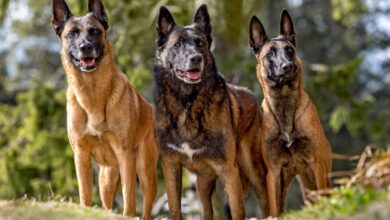
When you hear the name “Black and Tan Coonhound,” you might picture a striking hound with soulful eyes, long velvety ears, and a nose that never seems to quit. But there’s so much more to this American scent hound than meets the eye. Known for their keen tracking abilities and gentle, affectionate nature, Black and Tan Coonhounds make wonderful family companions-whether they’re trailing a scent on a woodland adventure or curling up at your feet after a long day. Yet, owning one of these beautiful dogs comes with unique responsibilities, especially when it comes to grooming and coat care.
Proper grooming isn’t just about keeping your Black and Tan Coonhound looking sharp-it’s essential for their health, comfort, and happiness. From managing their sleek, short coat to caring for those signature floppy ears, a regular grooming routine can help prevent common issues like matting, ear infections, and skin irritation. In this article, we’ll share expert grooming tips, easy-to-follow coat care guidelines, and practical dog grooming advice tailored for Black and Tan Coonhound owners. Whether you’re a new pet parent or a seasoned hound lover, you’ll find actionable insights to keep your Coonhound healthy, happy, and looking their best.
Understanding the Black and Tan Coonhound’s Coat
The Black and Tan Coonhound coat is one of the breed’s most recognizable features. It is short, dense, and sleek, giving the dog a smooth and shiny appearance. This coat is designed to protect the dog in all kinds of weather, from cold winters to hot summers.
Unique Color Pattern
- The coat is always black with rich tan markings.
- Tan spots are found above the eyes, on the sides of the muzzle, on the chest, and on the legs.
- These markings are similar to those on breeds like the Doberman or Rottweiler, but the Black and Tan Coonhound’s pattern is unique to the breed.
Shedding
- The Black and Tan Coonhound sheds moderately all year round, with some increases in the spring and fall.
- Shedding is not heavy, but the short hairs can end up on furniture and clothes if not managed.
- Regular brushing helps control shedding and keeps the coat healthy.
Grooming Needs for the Black and Tan Coonhound Coat
Short-haired dog grooming for this breed is simple but important. The short, dense coat does not mat easily, but it does require regular care to manage shedding and keep the skin healthy.
Why This Coat Needs Special Grooming
- The short, dense fur sheds constantly, so loose hairs need to be removed before they spread around the house.
- The breed is known for a “hound odor” that can linger, so regular bathing helps keep the dog smelling fresh.
- The coat is close to the skin, so dirt and oils can build up quickly, making regular brushing and occasional baths essential.
Grooming Techniques
- Use a bristle brush, hound glove, or rubber curry brush to remove loose fur and dirt.
- Brush the dog at least once a week. More frequent brushing during heavy shedding seasons helps keep hair under control.
- Bathe the dog about once a month, or as needed, using a gentle, odor-reducing dog shampoo.
- Wipe the dog’s face and ears regularly, as their long ears can trap dirt and moisture, which may lead to infections.
- Trim nails and brush teeth regularly as part of the overall grooming routine.
Comparison to Other Breeds
- Unlike long-haired breeds, the Black and Tan Coonhound’s short coat does not tangle or mat, so grooming is less time-consuming.
- However, because of their constant shedding, they need more frequent brushing than some other short-haired breeds to keep loose hair under control.
- Their distinct odor and large, floppy ears also require more attention than some other breeds.
Key Points for Owners
- The Black and Tan Coonhound coat is short, dense, and always black with tan markings.
- Moderate shedding is normal, so regular brushing is needed.
- Special attention to ear cleaning and odor control is important.
- Grooming is simple but should be consistent to keep your dog healthy and comfortable.
By understanding the needs of the Black and Tan Coonhound coat, you can keep your dog looking and feeling their best with just a little regular care.
Weekly Brushing to Control Shedding in Black and Tan Coonhounds
Why Weekly Brushing Is Important
Black and Tan Coonhounds have a short, dense coat that sheds moderately all year and a bit more during spring and fall. Weekly brushing is the best way to control this shedding. Regular dog brushing helps remove dead hair before it lands on your furniture and clothes. It also stimulates the skin, spreads healthy oils, and keeps your dog’s coat shiny and healthy.
Best Tools for Brushing
Here are the most effective tools for brushing a Black and Tan Coonhound:
- Hound glove: This glove fits on your hand and has rubber nubs that gently pull out loose fur and massage the skin.
- Rubber grooming mitt: Similar to the hound glove, this mitt is easy to use and works well for short coats.
- Firm-bristle brush: A medium-bristle brush is great for removing dead hair and dirt from the coat.
Tips for Brushing Your Black and Tan Coonhound
- Brush once a week. This is usually enough to keep shedding under control and keep your dog comfortable.
- Use gentle, circular motions with the hound glove or rubber mitt to loosen and collect dead hair.
- Brush in the direction of hair growth to avoid pulling or hurting your dog.
- Focus on areas where hair collects, like the neck, behind the ears, and under the collar.
- If your dog is shedding more than usual (like during seasonal changes), you can brush more often.
- Give your dog treats and praise during brushing to make it a positive experience.
Benefits of Regular Dog Brushing
- Removes dead hair and reduces the amount of fur in your home.
- Helps spot skin problems early, like bumps or fleas.
- Improves blood flow and skin health.
- Makes your dog look and feel better.
Extra Care Tips
- Bathe your Black and Tan Coonhound once a month or as needed to keep their coat clean and reduce odor.
- Wipe their face after meals to keep them tidy, since they can drool a lot.
- Trim nails and clean ears regularly as part of your grooming routine.
Weekly brushing with the right tools is key to managing Black and Tan Coonhound shedding. Using a hound glove, rubber grooming mitt, or firm-bristled brush will help with removing dead hair and keeping your dog’s coat healthy and shiny. Regular dog brushing is a simple way to show your Black and Tan Coonhound love and care while keeping your home cleaner.
Bathing: Managing Odor and Skin Health for Black and Tan Coonhounds
The Black and Tan Coonhound is a wonderful, friendly dog, but it is known for having a strong “hound odor.” Regular bathing is important for odor control, skin health, and keeping your dog comfortable and happy. Here’s how you can manage your Black and Tan Coonhound’s bath routine using simple steps and easy words.
How Often Should You Bathe a Black and Tan Coonhound?
- Give your Black and Tan Coonhound a bath at least once a month.
- Some owners find that every two to four weeks works best, especially if the dog gets dirty or starts to smell more than usual.
- Bathing too often can dry out your dog’s skin, so try not to bathe more than needed.
Choosing the Right Shampoo for Odor Control
- Use a gentle, odor-reducing dog shampoo made for sensitive skin.
- Look for shampoos labeled for “odor control” or “hound odor.”
- Avoid strong perfumes or harsh chemicals, as these can irritate your dog’s skin.
Bathing Steps for Your Black and Tan Coonhound
- Brush your dog before the bath to remove loose hair and dirt.
- Wet your dog’s coat with warm water.
- Apply the gentle, odor-control shampoo and lather well, especially in areas where odor is strongest.
- Rinse thoroughly to remove all shampoo.
- You can use a special leave-in conditioner or oil (like those with calendula or wheat germ oil) to keep the coat shiny and healthy, but always follow the product instructions.
Face and Ear Cleaning During Baths
- Wipe your dog’s face gently with a damp cloth; avoid getting soap in the eyes.
- Clean your dog’s long, floppy ears carefully. Use a soft, damp cloth or a vet-approved ear cleaner.
- Dry the ears well after cleaning to help prevent infections, as moisture can get trapped in the folds.
Extra Tips for Dog Bathing and Odor Control
- If your dog rolls in something smelly or gets extra dirty, it’s okay to bathe more often.
- In between baths, wipe your dog down with a damp towel or use pet wipes to help with odor.
- Regular brushing (once or twice a week) helps remove loose fur and keeps the coat healthy.
- Always check for fleas, ticks, or skin problems during grooming.
Ear and Nail Care Guide
Black and Tan Coonhounds are friendly, loyal dogs, but their long, floppy ears and strong nails need special attention. Here’s how you can keep your Coonhound healthy and comfortable with simple ear cleaning and nail care routines.
Ear Care: Preventing Infections
Why Ear Cleaning Matters
Black and Tan Coonhounds have long, floppy ears. This ear shape traps moisture and dirt, creating a warm, dark place where bacteria and yeast can grow. That’s why regular ear cleaning is important for dog ear infection prevention and overall Black and Tan Coonhound ear care.
How Often to Check and Clean
- Check your dog’s ears at least once a week.
- Clean ears every 1–2 weeks, or after your dog gets wet (like after swimming or a bath).
- Look for signs of infection: redness, swelling, bad smell, or discharge. If you see these, call your vet.
Safe Ear Cleaning Steps
- Use only a vet-recommended ear cleaning solution. Homemade or harsh cleaners like hydrogen peroxide can irritate your dog’s ears.
- Gather supplies: cotton balls or gauze, ear cleaning solution, and a towel.
- Squeeze the solution into your dog’s ear canal. Gently massage the base of the ear for about 30 seconds.
- Let your dog shake their head. This helps remove debris.
- Use a cotton ball or gauze to gently wipe the ear canal. Only go as deep as your finger can reach-never use cotton swabs, as they can push dirt deeper and hurt your dog.
- Always reward your dog with praise or treats to make ear cleaning a positive experience.
Extra Tips
- Keep ears dry and well-ventilated, especially after swimming or baths.
- If you notice lots of debris or your dog seems uncomfortable, clean more often or talk to your vet.
- Regular ear cleaning helps prevent painful ear infections and keeps your dog happy.
Nail Trimming: Comfort and Mobility
Why Nail Care is Important
Long nails can make it hard for your Black and Tan Coonhound to walk. Overgrown nails may break, chip, or even curl into the paw, causing pain and affecting your dog’s gait. Regular dog nail trimming is key for Black and Tan Coonhound nails health and comfort.
How Often to Trim
- Trim nails every 1–2 weeks, or as soon as you hear them clicking on the floor.
- Dogs that walk on rough surfaces may need less frequent trims.
Safe Nail Trimming Tips
- Use dog-specific nail clippers or a grinder. Make sure they are sharp and clean.
- For black nails (common in this breed), trim only small bits at a time. After each trim, look at the nail head-on: when you see a small white or dark dot in the center, stop trimming-that’s the quick (the sensitive part with nerves and blood vessels)
- Hold your dog’s paw gently but firmly. Trim just the tip of each nail, straight across.
- If you’re new to nail trimming, ask your vet or a groomer to show you how, or start slowly with lots of treats and praise.
- Have styptic powder or cornstarch nearby to stop bleeding if you accidentally cut the quick.
Making Nail Trimming Easier
- Start handling your dog’s paws early, so they get used to the feeling.
- Trim one nail at a time if your dog is nervous, and reward them after each nail.
- Use a non-slip mat to help your dog feel secure during trims.
- If you’re unsure, it’s okay to visit a groomer or vet for help.
With regular Black and Tan Coonhound ear care and nail care, your dog will stay happy, healthy, and ready for adventure.
Dental Hygiene: Keeping Teeth and Gums Healthy
Maintaining proper dental hygiene is crucial for your dog’s overall health, especially for breeds like the Black and Tan Coonhound. Poor dental care can lead to dental disease, which not only causes discomfort but can also impact other organs such as the heart, liver, and kidneys. Here’s how to ensure optimal dog dental care and promote excellent Black and Tan Coonhound dental health.
Why Dog Dental Care Matters
- Dental disease begins with plaque, a sticky film of bacteria that hardens into tartar within 24 hours.
- Untreated, this leads to gingivitis (gum inflammation), periodontitis (bone loss), tooth loss, and can spread bacteria to other organs.
- Signs of dental disease include bad breath, difficulty eating, bleeding from the mouth, and swelling on the jaw or face.
Teeth Cleaning Routine for Black and Tan Coonhounds
- Brush at least twice a week: Use a canine-specific toothpaste to brush your dog’s teeth. Focus on the outside surfaces of the teeth, especially the canines and large cheek teeth where debris accumulates. Gently brush the gums as well to help prevent gum disease.
- Technique: Brush in a downward motion, spending about 30 seconds to a minute per side. Most dogs tolerate short sessions better.
- Professional cleanings: Even with regular home care, periodic professional dental cleanings by your veterinarian are necessary to remove tartar below the gumline and check for dental disease.
Supplements to Brushing
- Dental chews and toys: Offer dental chews or toys designed to reduce plaque and tartar. These can supplement brushing and provide enrichment, but avoid excessively hard items that could fracture teeth.
- Dental powders and water additives: Add dental powders or water additives approved for dogs to help control bacteria and freshen breath.
- Veterinarian-approved products: Always choose products recommended by your vet or certified by the Veterinary Oral Health Council.
Special Considerations for Black and Tan Coonhound Dental Health
- Black and Tan Coonhounds, like all breeds, benefit from regular teeth brushing and dental chews to prevent dental issues.
- Routine veterinary check-ups should include oral exams to catch early signs of dental disease and determine if a professional cleaning is needed.
Occasional Coat Tidying
While Black and Tan Coonhounds have short, dense coats, occasional trimming can help keep them tidy and comfortable.
Dog Coat Trimming for a Tidy Dog
- Focus areas: Trim around the tail, paws, and sanitary areas as needed to prevent matting and maintain cleanliness, even for short-haired breeds.
- Tools: Use blunt scissors or a trimmer for safety. Always brush the coat first to remove loose hair.
- Calm environment: Take your dog for a short walk before grooming to help them relax.
- Frequency: Occasional tidying is usually sufficient for Black and Tan Coonhounds, as their short coat sheds constantly but does not mat easily.
Conclusion
Prioritizing dog dental care by brushing your Black and Tan Coonhound’s teeth at least twice a week with canine toothpaste, offering dental chews, and scheduling regular veterinary cleanings is essential for long-term health. Supplement this routine with safe dental toys and approved oral health products. For grooming, occasional coat trimming around key areas will keep your tidy dog looking and feeling their best. Consistent attention to both dental and coat care ensures your Black and Tan Coonhound remains healthy, happy, and comfortable throughout their life.
FAQ
How often should I groom my Black and Tan Coonhound?
Groom your Black and Tan Coonhound once a week. Brush their coat to remove dirt and loose hair. Check ears and trim nails regularly to keep them healthy.
What are the best products for Black and Tan Coonhound grooming?
Use a soft-bristle brush, dog-friendly shampoo, ear cleaner, and nail clippers. Choose gentle products made for dogs with short coats and sensitive skin.
How do I reduce my coonhound’s shedding?
Brush your coonhound weekly with a shedding tool. Bathe them once a month and give them healthy food to keep their coat strong and reduce shedding.
Are Black and Tan Coonhounds hypoallergenic?
No, Black and Tan Coonhounds are not hypoallergenic. They shed and can cause allergies in sensitive people, so regular grooming helps control dander.
How do I prevent ear infections in my coonhound?
Clean their ears weekly with a vet-approved cleaner. Dry their ears after baths or swimming to keep moisture out and lower the risk of infection.



